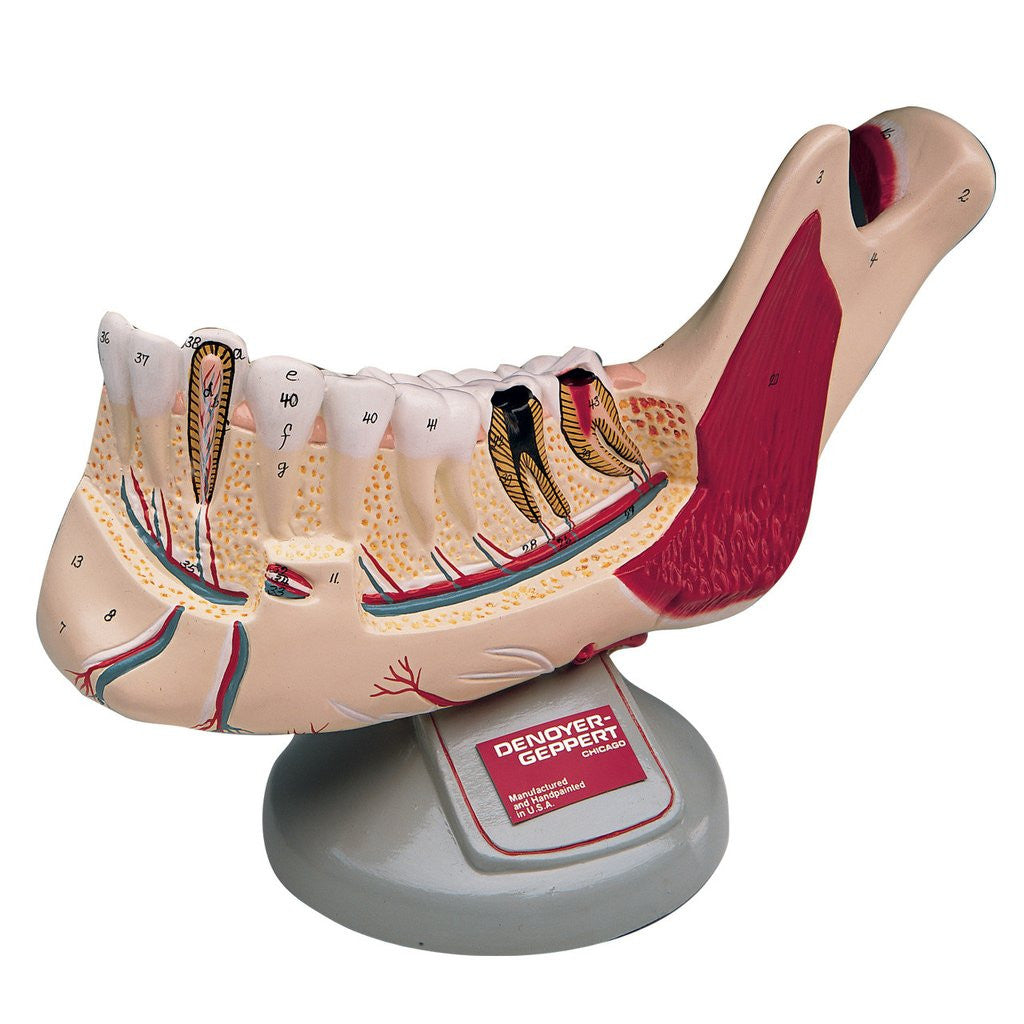Description
The left mandible of a postadolescent with its full complement of eight teeth, approximately three times life size, is faithfully rendered in unbreakable plastic. The bony outer layer of the jaw is cut away, exposing the mandibular blood vessels, roots of the teeth, and their nerves. Sectioned longitudinally from crown to root, one molar shows the destructive action of caries, while another exhibits advanced inflammation (pulpitis). The inner surface of the jaw shows the submaxillary and sublingual salivary glands.
48 numbered features are defined in the accompanying key.
Overall dimensions: 13×14×9 inches (33×36×23 cm).
- Body of mandible
- Condylar process
- Coronoid process
- Mandibular notch
- Angle of mandible
- Genial tubercle
- Mental protuberance
- Mental tubercle
- Retromolar triangle
- Mandibular foramen
- Mental foramen
- Mylohyoid groove
- Symphysis of mandible
- Section of mandible, showing cancellous tissue
- Medial pterygoid muscle
- Lateral pterygoid muscle
- Mylohyoid muscle
- Superior constrictor muscle of pharynx
- Digastric muscle, anterior belly
- Masseter muscle (insertion)
- Gingiva
- Submandibular gland
- Submandibular duct
- Sublingual gland
- Excretory ducts of sublingual gland
- Inferior alveolar artery
- Inferior alveolar vein
- Inferior alveolar nerve
- Mylohyoid nerve
- Lingual nerve
- Facial artery
- Mental artery
- Mental vein
- Mental nerve
- Incisive branches of alveolar artery, vein & nerve
- Central incisor
- Lateral incisor
- Canine tooth (cuspid)
- Enamel
- Dentin
- Cementum
- Pulp with dental vessels and nerves
- Periodontal membrane
- Premolars or bicuspids
- Crown
- Neck
- Root
- First molar
- Second molar - Shows destructive action of carie on pulp, and inflammation of the periodontal membrane.
- Third molar shows caries and pulpitis
